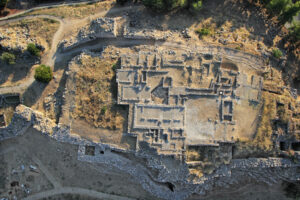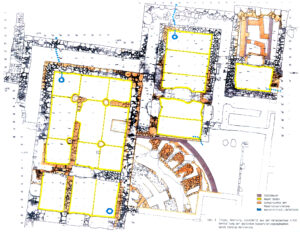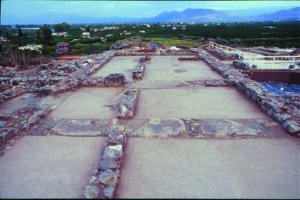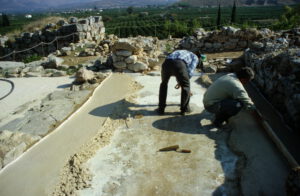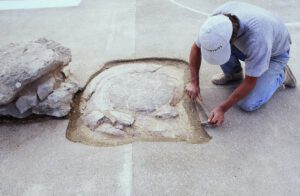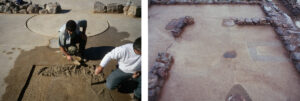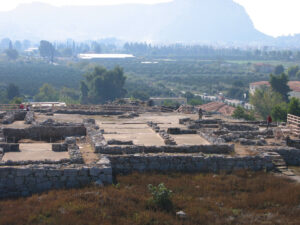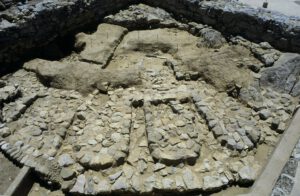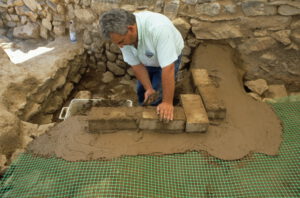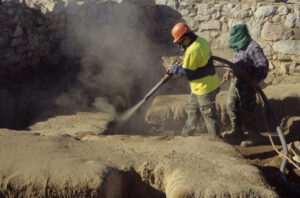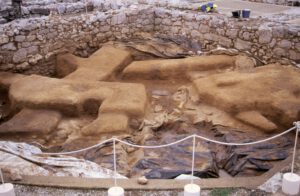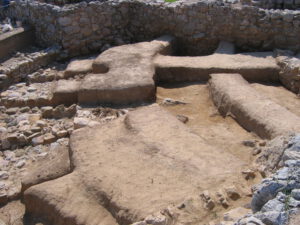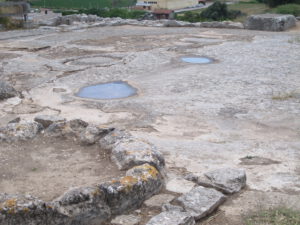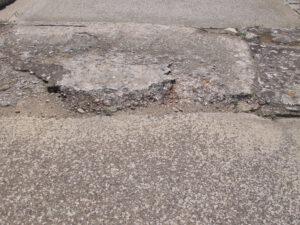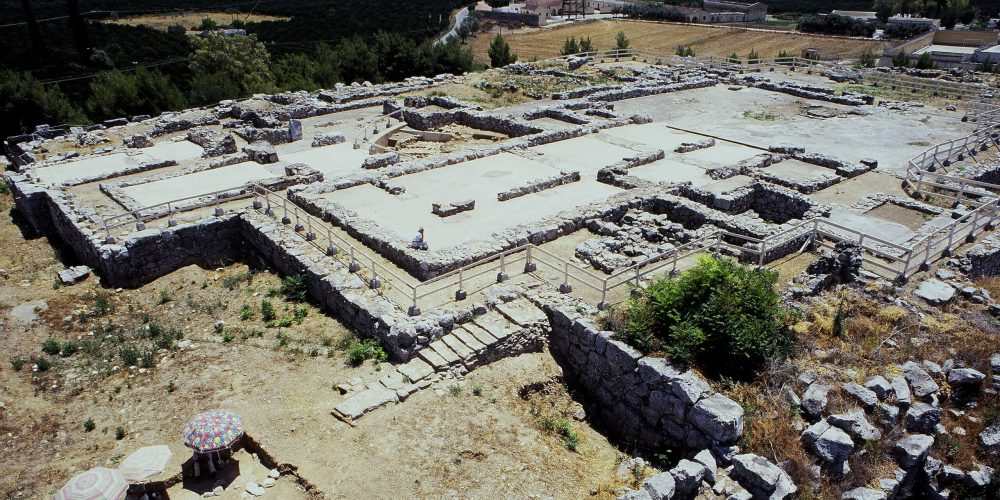
Palace Floor Renewal and Mudbrick Conservation
Location:
Nafplion, Greece
Client:
Deutsches Archäologisches Institut (DAI) Athens
Completion:
1997 – 2002
Subject:
Site Preservation
Cooperation:
University of Heidelberg, Ephoria of Antiquities Nafplion, Ministry of Culture, Greece
Location:
Client:
Completion:
Subject:
Cooperation:
Nafplion, Greece
Deutsches Archäologisches Institut (DAI) Athens
1997 – 2002
Site Preservation
University of Heidelberg, Ephoria of Antiquities Nafplion, Ministry of Culture, Greece
The main concern was the severely damaged floorcovering of the Megara, from which formerly most of the colored dolphin motives had already been removed. Before installing new floorcoverings, J. Maran took the opportunity to dig inside the Megaron rooms to research the earlier historic palace building phases. The new floorcovering consists of a system of about 10 to 15 m² elements, which are brought onto a layer of stamped gravel. The elements are separated from each other by thin strips of plywood and consist of first 10 cm concrete and last 6 cm floor screed mixture. The historic wall foundations are protected by small strips of styrofoam. Rainwater is lead outside by drainage pipes. Inside the courtyard of the small Megaron mud brick relics of an Early Helladic round building were restored and protected by special mixture of chemical treated clay mortar, which was inserted under high pressure and gives resistance to rainwater.
